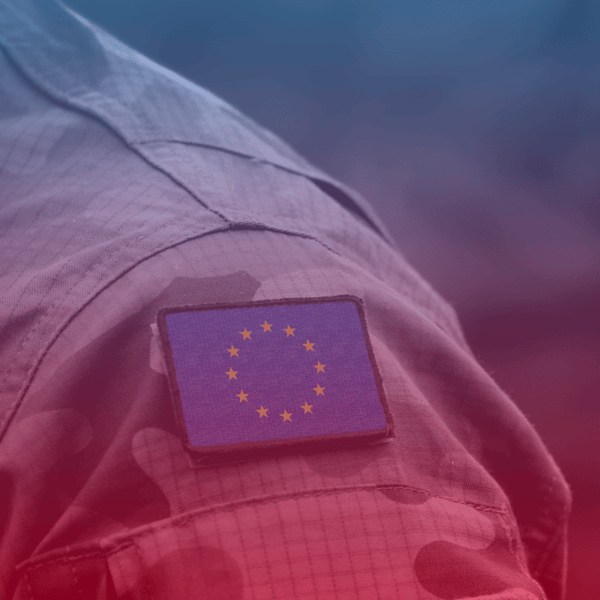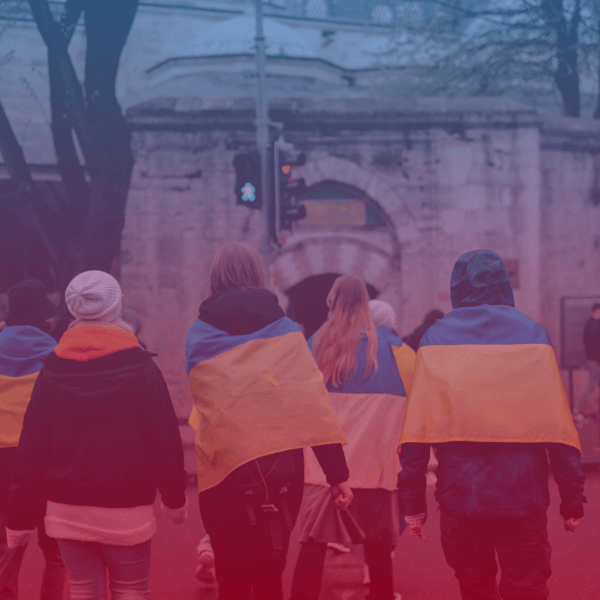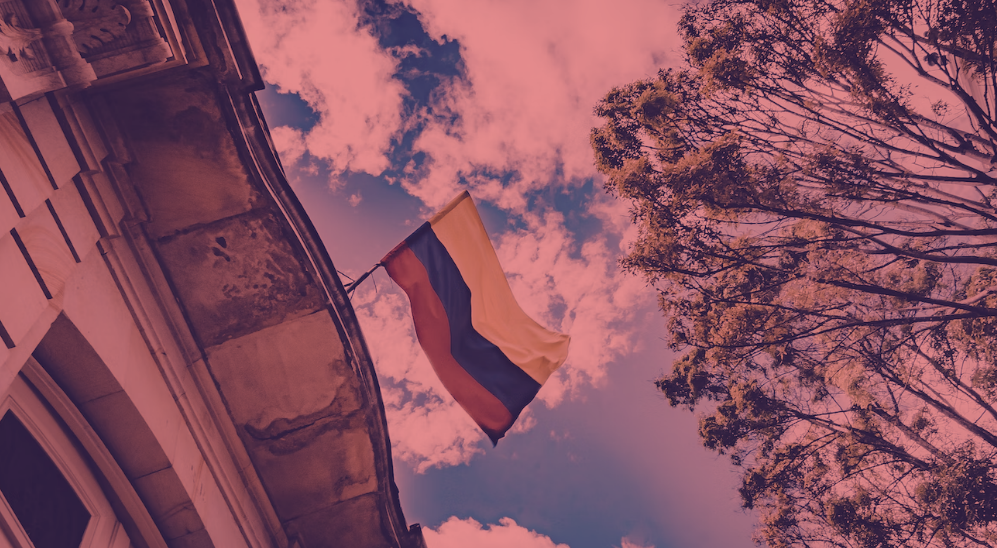
Written by Julia E. García Álvarez
Introduction
Colombia’s history over the last sixty years has been marked by armed conflict. In the beginning, the unequal distribution of land and the lack of spaces for political participation gave rise to the use of violence and armed struggle. In the following years, this method was reinforced by the emergence of drug trafficking, narco-terrorism, the presence of new political and armed actors in a context of revolutionary struggle, the Cold War, and the war against terrorism, which have transformed the conflict into a raison d’être and a means of subsistence.
In this context, armed groups have justified the use of violence as the only method of transforming society and with the intention of not allowing changes considered illegitimate. Thus, the fracture created by inequalities, the use of violence and the struggle for power have marked the social and political dynamics that have taken place in Colombia since the establishment of the Republic in the 19th century until 2016, when the peace agreement was signed. This process of transition to peace has been characterised by numerous obstacles where systematic human rights violations have taken place and where violence and insecurity have not diminished. Human rights defenders have been specific targets of this violence, and in many cases have been victims of assassinations, threats, harassment, and many of them have ended up fleeing their countries to seek asylum in other countries in Latin America and Europe.
The protagonists of the armed conflict
One of the characteristics of the conflict in Colombia is the plurality of actors that have fuelled and transformed the armed conflict in the country. Although the main actors in the conflict have always been, for the most part, the traditional political parties and guerrilla movements, the emergence of different revolutionary and paramilitary groups and the influence of drug trafficking have had a greater or lesser predominance depending on the period under study. Furthermore, it is worth remembering that, in general terms, Colombia has been characterised by a social divide between a political elite with a strong regional, latifundista and monopolistic presence,on one hand, and, on the other hand, minority groups such as indigenous people, Afro-descendants and peasants who have not had the same access to property rights or state services (J. E. Ugarriza and N. P. Ayala, 2017).
Between 1974 and 1990, Colombia’s history was marked by several constitutional reforms that, despite some advances, maintained serious social deficiencies of a structural nature. Among them was the enactment of an agrarian reform with the aim of allowing access to land. In 1978, the political and armed repression carried out under the legislature of President Julio César Turbay Ayala (1978-1982) of the Liberal Party was known for the enactment of the controversial Security Statute aimed at appeasing social unrest, which triggered numerous human rights violations. At the same time, drastic changes were made in economic policy throughout the 1970s: state intervention was reduced, leading to economic liberalisation processes. The result was the deterioration of the social structure, rising interest rates, increased speculation and business concentration (J. R. Sierra, 2019).
- The emergence of contemporary guerrillas
The origin of contemporary guerrillas in Colombia is attributed, among other things, to socio-economic exclusion and the lack of spaces for free political participation. The excluded sectors include the university and intellectual sectors, as well as the peasant and indigenous populations. Among the most notorious guerrilla movements of the second half of the 20th century were the Fuerzas Armadas Revolucionarias de Colombia, Ejército del Pueblo (FARC-EP), the Ejército de Liberación Nacional (ELN), the Ejército Popular de Liberación (EPL) and the Movimiento Diecinueve de Abril (M-19). Each movement has responded to a political, ideological and military conception reflecting the whole range of lines along which the Colombian left has been divided. Each of these movements was born in particular historical and regional situations and adopted distinct political ideologies and particular ways of operating. In the early years, guerrilla movements presented themselves as the fruit of political and social frustration (J. E. Ugarriza and N. P. Ayala, 2017).
a) Revolutionary Armed Forces of Colombia – People’s Army (FARC-EP)
The FARC-EP was formed in 1964 as a peasant self-defence group, whose ideology is Marxist-Leninist and whose military strategy has been mainly guerrilla warfare. The origins of this group date back to the first conference of the Southern Bloc. Pedro Antonio Marín Marín, alias Manuel Marulanda Vélez or Tirofijo, joined the ranks of the liberal peasant self-defence groups in the 1950s, in a territory in the village of Gaitania (Department of Tolima) called República de Marquetalia. The aim was to create the guerrillas to represent the rural population and to form a government dedicated to the redistribution of wealth. In 1982, at the VII Conference in the region of Guayabero (Meta), the guerrillas decided to add “People’s Army (FARC-EP)” to the name and clarified the tactical and strategic operational concept.
Geographically, this armed group has been most extensive in the south-eastern regions of the jungle and in the plains at the base of the Andes Mountains. In 2000, the movement controlled nearly 40 percent of the Colombian territory, with around 12,000 fighters, and 18,000 in 2007, according to the organisation. In 2008, Tirofijo died of a heart attack, leaving Alfonso Cano in charge, who died at the hands of the army in 2011. Rodrigo Lodoño Echeverri, known as Timochenko, currently leads the movement, which has approximately 8,000 members (J. E. Ugarriza and N. P. Ayala, 2017).
b) Colombian National Liberation Army (ELN)
The ELN was founded in 1965, influenced by the Cuban Revolution (1959) and Liberation Theology. Together with the FARC-EP, they form the so-called insurrectional focus. Historically, the emergence of this movement has to do with the radicalisation of the class struggle through violence. This process is intertwined with the need for survival and the conviction of the impossibility of finding a way out of the situation in the country by other means. The ELN has a Marxist-Leninist ideological base and its current leader is Nicolás Rodríguez Bautista, alias “Gabino”, who currently has around 3,000 combatants. This armed group has been present mainly in the Catatumbo area, in the Norte de Santander area, in the south of the Department of Bolívar, and in the departments of Arauca, Cesar, Antioquia, Cauca, Nariño, Chocó and Valle del Cauca. The main objective of this armed group is to influence local and regional powers; they are carriers of the “dual power” proposal drawn from the experience of El Salvador (J. E. Ugarriza and N. P. Ayala, 2017).
c) Popular Army of National Liberation (EPL)
The Ejército Popular de Liberación Nacional (EPL) was formed in 1966 and, unlike the previous ones, its ideology is Marxist-Leninist-Maoist and linked to the Communist Party. This group underwent a demobilisation process of 2,000 combatants in 1991. It currently operates a small dissidence called the Libardo Mora Toro Front in Norte de Santander (J. E. Ugarriza and N. P. Ayala, 2017).
d) 19 April Movement (M-19)
The M-19 came on the scene in 1973 and differentiated itself from other subversive experiences because of its rural character, its democratic discourse and because it defined itself as an anti-oligarchic, anti-imperialist, united movement with a political proposal. It was born out of the declared electoral fraud of 1970 and it eventually became a political force (Alianza Democratica M-19) after the signing of…which resulted in a new Constitution in 1991. That year also saw the demobilisation of the EPL, Partido Revolucionario de Trabajadores (PRT) and Movimiento Armado Quintín Lame (MAQL). It is also worth mentioning that some of its main leaders had previously fought in the FARC-EP.
- Paramilitarism
These are extreme right-wing groups, which multiplied in the 1980s and have their origins in the enactment of Law 48 of 1968, through which the Colombian state allowed the privatisation of the armed struggle into the hands of civilians protected by the interests of regional elites. In the 1980s, the arrival of drug traffickers on the scene made the conflict with the guerrillas even more complex. The traffickers began to invest their extraordinary profits in rural properties, making them targets for extortion. The paramilitaries expanded thanks to the support of wealthy landowners and small industrialists. A decisive event in the formation of paramilitarism in those years was the kidnapping by the M-19 of Martha Nieves Ochoa, a relative of members of the Medellín cartel (E. D. J. V. Rivera, 2007).
In the 1990s, the United Self-Defence Forces of Colombia (AUC) was created, uniting various paramilitary groups. The AUC was disbanded between 2003 and 2006 in a demobilisation process initiated by the Justice and Peace Law (Law 975 of 2005) promoted by the then President of the Republic, Álvaro Uribe Vélez. In the first two years, 23 groups were demobilised, involving approximately 14,000 people. However, some factions that were not part of the demobilisation process have formed what are now known as the BACRIM or criminal gangs (E. D. J. V. Rivera, 2007).
- Security Forces
The security forces comprise the Military Forces (Army, Navy and Air Force) and the National Police. These agencies began the fight against insurgent groups with the adoption of the National Security Doctrine, which aimed to eradicate the communist threat through the creation of anti-terrorist and development assistance security forces. In recent years, the security forces have undergone a process of restructuring and modernisation through programmes such as Plan Colombia, which has been supported by the United States and has aimed to reaffirm the rule of law and curtail the network of drug and arms trafficking that feeds guerrilla violence and that of other armed organisations. However, according to a 2015 Human Rights Watch report, as of July 2014 the Human Rights Unit of the Attorney General’s Office had investigated more than 3,500 cases of illegal executions allegedly perpetrated by 785 members of the army (low-ranking soldiers and non-commissioned officers) between 2002 and 2008 (J. R. Sierra, 2019).
- Drug trafficking
In the 1990s, Colombia became the world’s leading producer of coca leaf. According to Rafael Pardo in his book “La historia de las guerras”, between 1975 and 1995 the structure of the business was simple. Bolivia and Peru produced 90 percent of the coca leaf and coca paste and base, which was transported in small planes to the Colombian jungles, where 90 percent of the world’s cocaine was refined and sold to the United States. This structure became more complex when the governments of Peru, Colombia and Ecuador decided to control the borders. However, when a fungus appeared in Peru and Bolivia that wiped out the cultivated area, Colombia came to control cultivation as well. The FARC-EP took over a large part of the hectares of cultivation, which led to an increase in its military capacity and control of 150,000 hectares of coca leaf crops located in two million hectares of jungle in the south of the country (A. L. A., Cruz, and D. M. R., Rivera, 2008).
The FARC-EP’s involvement in drug trafficking has to do with the production process of this narcotic. The guerrilla finances itself by charging for the security of illicit crops, the tax on laboratories (“gramaje tax”) and the use of clandestine runways. Therefore, in the midst of the armed conflict, drug trafficking has served as a means of financing for both the guerrillas and the self-defence groups.
- Organised crime
Criminal networks are mostly involved in drug and arms trafficking. In the 1970s and 1980s, drug cartels were mainly concentrated in the cities, the best known being the Medellín cartel and the Cali cartel. These two were dismantled during the 1990s after being the target of extensive interventions by the Colombian police. The Medellín cartel was dismantled and the Cali cartel was imprisoned, which was an achievement for the authorities. However, according to the report “Four Decades of the War on Illicit Drugs: A Cost-Benefit Analysis” by the Ministry of Foreign Affairs, there was a considerable increase in coca cultivation after this period. Following the demise of the cartels, new groups have emerged and their activities have shifted to Central America and Mexico. Organised crime cartels maintain links with paramilitaries and guerrillas. Although drugs were not properly a factor in the war, they became one when those involved in drug trafficking decided to challenge the state to change its laws, in particular the extradition treaty with the United States (C. A. Prieto, 2013).
- Victims
The report ¡Basta Ya! by the Centro de Memoria Histórica, published in 2013, states that between 1958 and 2012 the conflict caused the death of 40,787 combatants and 177,307 civilians. The number of missing people between 1981 and 2010 was 25,000, the number of kidnapped 27,023 and the number of murders 150,000. Of the latter figure, 38.4 percent were the responsibility of the paramilitaries, 16.8 per cent of the guerrillas and 10.1 per cent of the security forces (Centro de Memoria Histórica, 2013).
In the same vein, the 2015 yearbook of peace processes of the School for a Culture of Peace notes that in 40 years of internal conflict, 39,000 Colombians were victims of kidnapping, with an impunity rate of 92 per cent. Thirty-seven percent of kidnappings were attributed to the FARC-EP and 30 percent to the ELN. The yearbook reports that according to the Uppsala Conflict Data Programme (UCDP) there are at least 1,000 combat-related deaths per year (Escuela de Cultura de Paz, 2015).
On the other hand, the UNHCR states that since 1997 there have been 3.9 million forcibly displaced people in Colombia (UNHCR, 2013). Civil society has been largely affected by the armed conflict and has been protesting for many years against the violence perpetrated by all those involved in the conflict. Women’s, Afro-descendant and indigenous communities, among others, have played a crucial role in citizens’ demands, and since 1998 (the year the National Peace Council was created) they have been contributing to the peace dialogue, addressing their demands to the guerrillas, paramilitary groups and the government (CIDOB, 2016).
In terms of the number of displaced people, the report ¡Basta Ya! reports 5.7 million victims between 1985 and 2012 (Centro de Memoria Histórica, 2013). In 2011, President Santos approved the Victims and Land Restitution Law, which included the restitution of millions of acres to displaced people and financial rewards for victims of human rights violations. According to the Human Rights Watch report, this process is being slowed by paramilitary successor groups, who continue to grow, commit widespread atrocities, and maintain extensive links with members of the public security forces and local political groups (Human Rights Watch, 2015).
- Current post-conflict situation
In 2016, the final agreement for the termination of the conflict and the construction of a stable and lasting peace (Peace Agreement) was signed between the Government of Colombia and the FARC-EP. Since then, 16 special transitional peace constituencies have been created, including one that advocates for the political participation of victims from the areas most affected by the armed conflict and from the most excluded sectors of society. However, an increase in violence in rural areas and some urban centres in 2021, severely affected the leadership and community life of indigenous people, peasants and Afro-descendants, as well as women in rural areas”. (UN General Assembly, 2022).
With the promise of sweeping changes to the police and military, a new government is now taking the reins in Colombia at a time of increasing violence. Current President Gustavo Petro, the first leftist leader in the country’s recent history, has pledged to honour the peace agreement and press ahead with efforts to negotiate and demobilise other armed and criminal groups and avoid relying on military force, a radical departure from the outgoing government (International Crisis Group, 2022).
The conflicts proliferating in rural areas, particularly along Colombia’s borders and the Pacific coast, bear only a faint resemblance to those of the past. Insurgents following a Marxist doctrine and hyper-violent drug cartels have largely given way to a fragmented scramble for territorial dominance among dozens of groups, including dissident factions of the former FARC, post-paramilitary forces and smaller criminal gangs. The National Liberation Army (ELN) guerrillas still have ideological motivations, although they have also abandoned their ambition for national power. For almost all of these groups, illicit profits are the main objective. Revenues, in turn, depend on the territorial control they secure, which is more easily achieved through coercion of the local population than by seizing power in Bogotá or waging open warfare against the state’s armed forces. Armed groups rarely seek confrontation with the army, although they do carry out selective attacks against troops and police. Instead, their modus operandi is to entrench their presence by threatening, intimidating and exploiting local communities.
Colombia’s central government has traditionally relied on the military to contain problems in the countryside. The unique characteristics of the armed forces undoubtedly appeal to political leaders. Unlike most civilian organs of state, the armed forces can be deployed quickly to the most inhospitable corners of the country; their missions range from fighting guerrillas to managing natural disasters and combating deforestation. They have also traditionally been more popular than other institutions, despite their reputation being tarnished by atrocious wartime crimes against civilians and several recent cases of corruption.
Transforming the Colombian state’s approach to insecurity in its rural areas is central to President Petro’s plans. Senior officials in the new government have spoken of achieving a ‘total peace’, including negotiations with the remaining armed groups, the demobilisation of criminal gangs and a new role for the army, focused on protecting civilians. But this change in government strategy will be difficult and fraught with political obstacles. Petro will have to earn the trust of an institution that while distrusting his past as a guerrilla, still plays a key role in maintaining state security.
SUBJECTS OF VIOLENCE: HUMAN RIGHTS DEFENDERS AT RISK
“Defending human rights continues to be considered high-risk work in Colombia” mentioned the United Nations High Commissioner for Human Rights in her report issued in May 2020. In 2019, OHCHR documented 108 killings of human rights defenders, including 15 women and 2 LGBTI people. Although the figures show the gravity of the problem, reducing the analysis to a numerical consideration prevents understanding and addressing the structural causes of violence against human rights defenders (UN General Assembly, 2020: 16-29). In 2021, OHCHR received 202 allegations of killings of human rights defenders, of which 100 were found to have a link between their death and their work in defence of human rights and 102 were found to be inconclusive. Of the victims, 12 of the cases verified were women, including seven indigenous, and 88 were men, including nine Afro-descendants and nine indigenous . The main perpetrators were members of non-state armed groups and criminal organisations (UN General Assembly, 2022: 39).
According to the Centro de Investigación y Educación Popular, eight indigenous human rights defenders were killed in the departments of Cauca, Nariño, Putumayo and La Guajira during the first half of 2022. They were Carmen Ofelia Cumbalaza (pre-candidate for municipal council for the Movement of Indigenous Authorities of Colombia), María Bernarda Juajibioy, Gilberto Findicué, Aura Esther García, Fernando Esneider Lozada, Geovanny Cabezas (youth leader and indigenous guard of the Kwe’sx Kiwe Nasa reservation), and Oneida Argenis Yatacué and her husband Marcelino Yatacué. Between January and October 31st, the OHCHR received 180 reports of killings of human rights defenders, of which 67 were verified. According to the NGO Programa Somos Defensores, 501 threats, 86 killings and 72 attempted killings of human rights defenders were registered between January and September. Of these, 41.6% took place in the context of the National Strike. Environmental defender Jani Silva was forced to leave her home in Puerto Asis (Putumayo department) on the 23rd of July when a plan to assassinate her came to light. On December 14th, Temblores denounced alleged monitoring and interception orders against its members by the Attorney General’s Office. The human rights organisation had documented police violence and represented victims of human rights violations in the context of the protests (Amnesty International, 2022).
Several types of human rights defenders are subject to violence in Colombia. The United Nations is particularly concerned about reports of acts of intimidation, threats and/or attacks, including killings, allegedly perpetrated against social, community and ethnic leaders, ethnic, land and environmental defenders, women defenders, LGBTI+ rights defenders, lawyers and journalists (UN Rapporteur Report, 2019).
- Social, community and ethnic leaders, rural peace promoters
They are the most exposed in the post-Peace Agreement era. According to the study by the Colombian Commission of Jurists, between the signing of the Peace Agreement and the end of July of 2018, of the total number of defenders killed, 23% were dignitaries of Community Action Boards (including four Afro-descendant leaders), 20% were community leaders, another 20% were ethnic leaders (12 % indigenous and 9 % Afro-descendant), 5% were victims’ rights defenders, 11% were peasant leaders, 2% were land claimants and 2% were human rights lawyers (Colombian Commission of Jurists, 2018: 22-24).
They mainly defend economic, social and cultural rights. Their demands include access to clean water, primary education and basic health care, all of which are essential and minimum obligations that the state has an immediate obligation to fulfil. They also demand access to electricity and roads. However, their human rights agenda puts them at risk. According to the testimonies received by the Special Rapporteur, they are forced to interact with different illegal armed and criminal groups and, when opposing their presence, forced recruitment or sexual exploitation of their daughters, extortion, or when pushing for the Peace Agreement, they become targets of these groups (Michel Forst, 2018: 20).
- Ethnic, land, and environmental defenders
These groups face additional challenges and rights violations, such as de facto racial discrimination with structural and historical causes, and risks intrinsically related to the defence of their peoples’ human rights, as well as their way of life and their land. The defence of land and the environment by ethnic or peasant leaders involves opposition to the interests and pressures of national and international companies that exploit natural resources in their territories (e.g. monocultures or mega-projects) and to the interests of illegal and mechanised mining and different armed actors. In this context, they are killed and attacked, and entire communities are harassed, intimidated and even displaced (UN Rapporteur Report, 2019: 36).
- Women defenders
In the first half of 2019, women defenders killed accounted for 17-20% of the total number of defenders killed, indicating an increase compared to previous years. According to available information, the women defenders killed are mostly community leaders, defenders of economic, social, cultural and environmental rights, and defenders of women’s and ethnic peoples’ rights (UN Rapporteur Report, 2019: 44). This means their characteristics for belonging to certain social groups, such as being a woman and belonging to a certain ethnicity, are also aggregated to their work as human rights defenders, and for that they become extremely vulnerable towards the violence. Like male defenders, women defenders are also threatened with death, they are attacked and they are killed. These threats often have a strong sexist and sexual content and they are even directed towards their sons and daughters. Moreover, in some cases, the violence and/or killings against them are extremely violent and vicious (C. Carrillo and C. Mosquera, 2022).
- Lawyers for victims of the conflict and human rights defenders
Lawyers representing victims of serious human rights violations during the conflict, as well as human rights lawyers, are at risk. They represent at least 2% of the total number of human rights defenders killed since the signing of the Peace Accord. They receive death threats, they are falsely accused of belonging to subversive groups and their homes and associations are subject to raids (Colombian Commission of Jurists, 2018: 22-24).
- Journalists
According to information obtained from the non-governmental organisation Fundación para la Libertad de Prensa, between 1977 and 2019, FLIP had registered 159 murders of journalists in Colombia due to their profession, and of these, 125 cases remain in complete impunity. The year 2019 came to an end with a struggle for public space throughout Colombia, as well as with worrying signs of contempt for journalists by some members of the police. The trend continues to increase. As of October 4, 2019, 329 violations of press freedom had been recorded and 79 against women journalists. These include two murders of communicators associated with the press, 104 threats, 43 legal actions against journalists and 21 aggressions related to the coverage of election campaigns. Journalists and media workers on human rights and corruption issues, along with those working in specific regions, particularly in Arauca, Cauca, Antioquia and Nariño, are most at risk. In rural areas, a general climate of fear has led to self-censorship in the sector (Fundación para la libertad de prensa, 2019).
ASSESSMENT OF THE SITUATION OF HUMAN RIGHTS DEFENDERS
On April 28, 2021, a highly controversial event took place in Colombia, the national strike, characterised as a largely peaceful and citizen mobilisation, with unprecedented participation of youth, which aimed to combat the high levels of inequality and economic, social and political exclusion. Despite the fact that Colombia enjoys an important legal framework for the protection of the right to assembly, the protests were repressed with high levels of violence. OHCHR documented cases of unnecessary or disproportionate use of force resulting in arbitrary deprivations of life and violations of personal integrity and security, as well as arbitrary arrests and sexual and gender-based violence, and acts of discrimination and racism. In some of these cases the victims were indigenous people, Afro-descendants, journalists and human rights defenders (UN General Assembly, 2022: 39).
In environments where speaking out to defend the human rights of vulnerable groups is not safe, true democracy cannot exist. Through the Citizen Security Law, Colombia has increased and aggravated the penalties for conduct that may be incurred by protesters, which amounts to a criminalisation of protest. OHCHR expresses its concern for the security of citizens in general and rights defenders in particular, as well as for the guarantee of the right to peaceful assembly and political participation. It encourages the State to promote a broad national debate on the aspects to be reformed within the police, including control and accountability mechanisms (UN General Assembly, 2022: 39).
On the other hand, after the failed peace agreement, FARC dissidents and the presence of different types of armed groups, whether paramilitary groups, drug traffickers or criminal groups, generate a climate of violence that especially targets human rights defenders. In contexts of violence and extreme inequality, it is only human rights defenders who dare to denounce injustice and defend the rights of the most disadvantaged groups, as the state is consequently unable or unwilling to protect them. This becomes an extremely dangerous task, as activists are totally exposed, and the situation is even more risky for defenders belonging to certain marginalised groups, be it because of their race, ethnicity or gender, who usually stand up on behalf of their community, to fight for their rights and combat the discrimination to which they are continually exposed.
To improve this situation, it is important to strengthen and, in some cases, reactivate spaces for participation between government and civil society, such as the National Process of Guarantees, the territorial roundtables of guarantees and the process of constructing the national human rights action plan (UN General Assembly, 2022: 49). The current Colombian government is committed to fulfilling the purpose of the 2016 peace agreement and has launched a total peace project to make it effective. But this will not be an easy task. Armed groups are likely to reject or even take advantage of the government’s peace initiatives. Moreover, in the short term, the armed forces will remain at the centre of security policy, and, as announced, while force may often be necessary, senior military commanders and civilian authorities must assess that they have failed to stop violence in the past and have often caused it to worsen (International Crisis Group, 2022). A strategy must be developed based on protecting civilians, providing reparations for victims, protecting activists and rights defenders, and guaranteeing political participation and democracy. Only in this way will the police and the national army be able to regain the trust of the rural population.
BIBLIOGRAPHY
Amnistía Internacional (2022). Informe 2021/22 de Amnistía Internacional. La situación de los derechos humanos en el mundo.
Carrillo C. y Mosquera C. (2022). Patrones de Violencia Sociopolítica de Género contra Lideresas y Defensoras de Derechos Humanos en Colombia: Claves Conceptuales y Metodológicas 2016- 2020. Sisma Mujer. Editorial Cuatro Ojos.
CIDOB (2016). Conflicto en Colombia: antecedentes históricos y actores, <https://www.cidob.org/publicaciones/documentacion/dossiers/dossier_proceso_de_paz_en_colombia/dossier_proceso_de_paz_en_colombia/conflicto_en_colombia_antecedentes_historicos_y_actores#:~:text=En%20los%20primeros%20a%C3%B1os%20los,la%20frustraci%C3%B3n%20pol%C3%ADtica%20y%20social.&text=Las%20FARC%2DEP%20se%20form%C3%B3,sido%20principalmente%20la%20lucha%20guerrillera>
Comisión Colombiana de Juristas (2018), ¿Cuáles son los patrones? Asesinatos de líderes sociales en el post Acuerdo.
Cruz, A. L. A., & Rivera, D. M. R. (2008). El narcotráfico en Colombia. Pioneros y capos. Historia y espacio, 4(31), 169-207.
Declaración de Fin de Misión del Relator Especial sobre la situación de los defensores de los derechos humanos, Michel Forst, visita a Colombia, 20 de noviembre a 3 de diciembre de 2018.
Fundación para la libertad de prensa (2019). Informe Anual 2019, Callar y Fingir, la censura de siempre.
Grupo de Memoria Histórica (2013). ¡Basta Ya! Colombia: Memorias de guerra y dignidad. Informe General.
International Crisis Group (2022). Atrapados por el conflicto: cómo reformar la estrategia militar para salvar vidas en Colombia.
Pacto internacional de Derechos Civiles y Políticos. Observaciones finales sobre el séptimo informe periódico de Colombia. 17 de noviembre de 2016.
Prieto, C. A. (2013). Las Bacrim y el crimen organizado en Colombia. Friedrich-Ebert-Stiftung, Programa de Cooperación en Seguridad Regional.
Rivera, E. D. J. V. (2007). Historia del paramilitarismo en Colombia. História (São Paulo), 26, 134-153.
Sierra, J. R. (2019). Breve historia del conflicto armado en Colombia. Los Libros de la Catarata.
Ugarriza, J. E., & Ayala, N. P. (2017). Militares y guerrillas: la memoria histórica del conflicto armado en Colombia desde los archivos militares, 1958-2016. Editorial Universidad del Rosario.
UN General Assembly (2022) Situation of human rights in Colombia – Report of the United Nations High Commissioner for Human Rights. A/HRC/49/19.
UN General Assembly (2019) Visit to Colombia. Report of the Special Rapporteur on the situation of human rights defenders, A/hcr/43/51/Add.1

 THE DIGITAL EURO: Unlocking its potential
THE DIGITAL EURO: Unlocking its potential 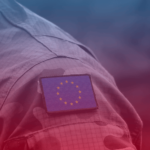 SAFE but Not Secure: The Challenge of a Common Defence and EU’s Unity
SAFE but Not Secure: The Challenge of a Common Defence and EU’s Unity  Blind Spots in AI Governance: Military AI and the EU’s Regulatory Oversight Gap
Blind Spots in AI Governance: Military AI and the EU’s Regulatory Oversight Gap 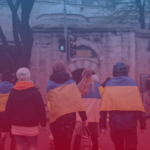 Selective Solidarity: The Desecuritisation of Migration in the EU’s Response to the Ukrainian Refugee Crisis
Selective Solidarity: The Desecuritisation of Migration in the EU’s Response to the Ukrainian Refugee Crisis 
